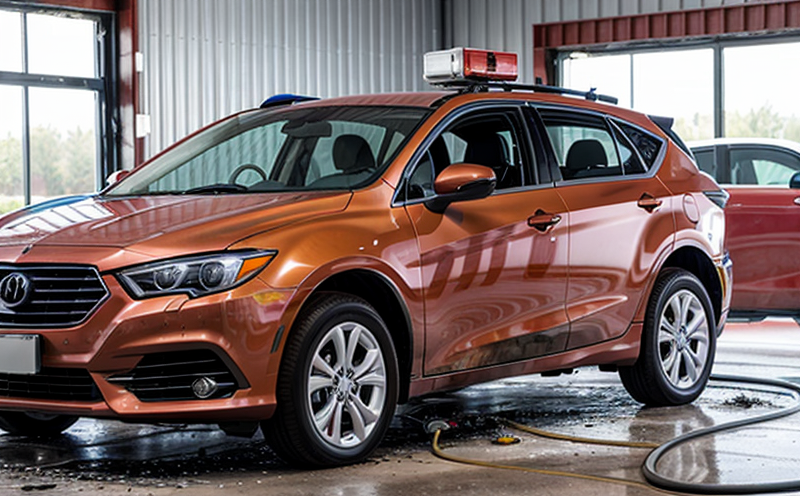Reaction-to-Fire Testing of Vehicle Trim Panels
The reaction-to-fire testing of vehicle trim panels is a critical process within automotive fire safety. This test evaluates how well the materials used in vehicle interiors react when exposed to heat, flame, or other sources of ignition. The aim is to ensure that interior components do not contribute significantly to the spread of fire or produce toxic smoke under real-world conditions.
Automotive manufacturers are increasingly focusing on improving fire safety and enhancing occupant protection. Reaction-to-fire testing helps identify materials with a low propensity for igniting, flaming, or producing excessive amounts of smoke when subjected to fire. This is especially important in the event of an accident where the vehicle might come into contact with flames.
The test involves subjecting samples of vehicle trim panels to controlled conditions that mimic real-world scenarios such as a smoldering cigarette, a high-temperature flame, or exposure to heat. The performance is evaluated based on various parameters including smoke production, flaming duration, and the amount of heat released. Compliance with international standards like ISO 56602 ensures that these tests are conducted under consistent and recognized protocols.
Testing vehicle trim panels involves specific specimen preparation steps. Samples must be cut to standard dimensions and mounted in a test fixture that allows for accurate measurement of parameters such as heat release rate, smoke production index, and oxygen index. The testing apparatus includes facilities capable of simulating various ignition sources and measuring the combustion characteristics accurately.
The results of this testing are crucial for ensuring compliance with automotive safety regulations. For instance, the European Union's ECE R94 regulation mandates that vehicle interiors must meet specific fire resistance standards to protect passengers in case of a fire. The test outcomes provide critical data that can inform material selection and design modifications aimed at enhancing fire safety.
Real-world applications of this testing include the development of safer vehicle interiors, meeting regulatory requirements, improving occupant protection, and reducing the risk of fire-related injuries or fatalities. By incorporating advanced materials and designs into their products, automotive manufacturers can significantly enhance the overall safety profile of vehicles.
Scope and Methodology
| Parameter | Description |
|---|---|
| Test Specimens | Samples cut to standard dimensions, representing the materials used in vehicle interiors. |
| Ignition Sources | Simulated by various means such as a smoldering cigarette or high-temperature flame. |
| Testing Equipment | Instruments capable of measuring heat release rate, smoke production index, and oxygen consumption. |
| Data Collection | Continuous monitoring of parameters during the test to ensure accurate reporting. |
Industry Applications
- Evaluating fire resistance of interior materials in vehicles
- Maintaining compliance with ECE R94 and other regulatory standards
- Identifying safer alternatives for flame-retardant materials
- Improving passenger safety during accidents involving fire
Eurolab Advantages
Eurolab offers comprehensive reaction-to-fire testing services tailored specifically for automotive fire safety. Our advanced facilities and experienced technical staff ensure that every test is conducted under the highest standards, providing reliable and accurate results.
We use state-of-the-art equipment capable of simulating a variety of ignition sources and measuring combustion parameters accurately. This allows us to provide precise data that can inform material selection and design improvements for safer vehicles. Our compliance with international standards like ISO 56602 ensures that our tests are recognized globally.
Eurolab's expertise in this area is reflected in our ability to deliver consistent, repeatable results across multiple samples. This reliability is crucial for automotive manufacturers who need to make informed decisions based on test outcomes. Our services not only help meet regulatory requirements but also enhance the overall safety of vehicles.





